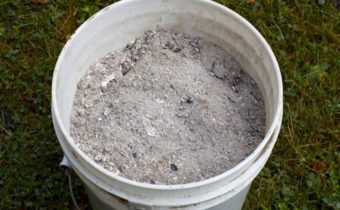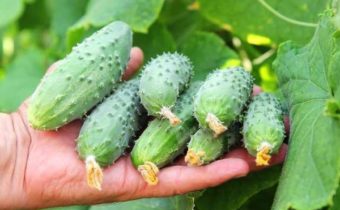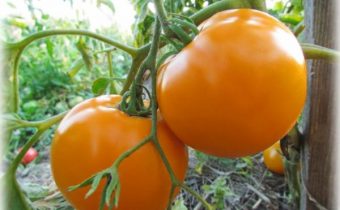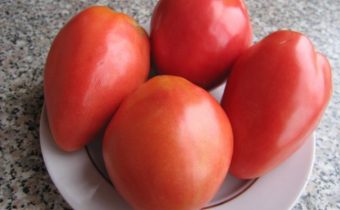What potassium fertilizers are suitable for tomatoes, and how to apply them?
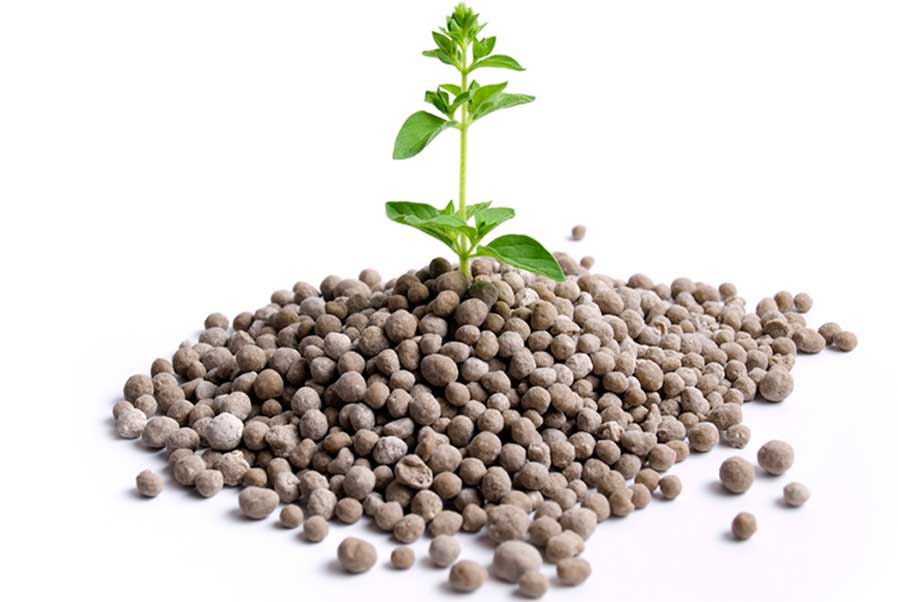
Potassium is an important chemical element necessary for the complex balanced nutrition of all vegetables. It provides full growth and development of the plant. Tomatoes suffering from potassium deficiency during ripening can often see half-green fruit that will never ripen. In order not to spoil the harvest, you need to carefully monitor the condition of the plants and at the first sign of potassium deficiency, fertilize them.
Benefits of Potash Fertilizers
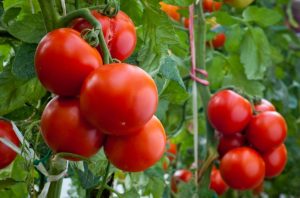 The amount of potassium in the soil affects the appearance of the fruit, taste, and the maturation process as a whole. Potassium fertilizers have the following advantages:
The amount of potassium in the soil affects the appearance of the fruit, taste, and the maturation process as a whole. Potassium fertilizers have the following advantages:
- seedlings more easily tolerate transplants in open ground, take root faster;
- the plant becomes more resistant to temperature extremes, its immunity to various diseases increases;
- the metabolism accelerates, which positively influences the setting of fruits, their growth and ripening.
How to determine the lack of potassium in tomatoes?
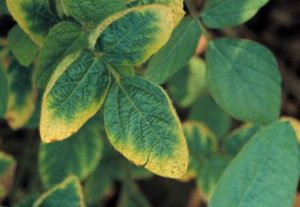 Plants react prematurely to an insufficient amount of potassium in the soil, so it is possible to fill its deficit in time. The first signals "give" leaves. Their necrosis, which begins at the edges, is manifested. As potassium deficiency increases, the color of the leaves turns yellow, and then brown. Then the leaf plates twist and fall, and the stem weakens and fades.
Plants react prematurely to an insufficient amount of potassium in the soil, so it is possible to fill its deficit in time. The first signals "give" leaves. Their necrosis, which begins at the edges, is manifested. As potassium deficiency increases, the color of the leaves turns yellow, and then brown. Then the leaf plates twist and fall, and the stem weakens and fades.
If time does not respond to changes in the color and condition of the leaves, the lack of potassium "show" the general condition of the bush - it will slow down its growth. The next sign of a lack of an element will be poor flowering and a small amount of ovaries. Fruits will remain immature in the area of the stem, fresh in taste and with internal hard green veins.
The use of potash fertilizers at different periods of growth
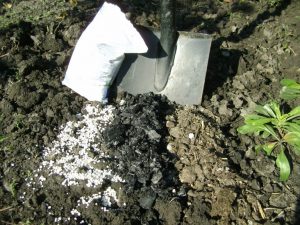 So that the plants do not suffer from potassium deficiency, we conduct regular feeding according to the following scheme:
So that the plants do not suffer from potassium deficiency, we conduct regular feeding according to the following scheme:
- The main fertilizer is applied in the spring before planting seedlings (pre-sowing stage). It provides soil saturation with essential nutrients. We also conduct such dressing in the fall so that the soil absorbs all the mineral elements during the winter period.
- We make fertilizers when planting plants in the ground (the seed stage). Such feeding will help the seedlings to “relive” the transplant more easily, adapt to the temperature regime and develop the root system. Due to this, the plant will develop steadily.
- Postseason stage. Performs as an aid to the previous two. Top dressing nourishes the plant during its intensive development and provides the necessary substances during fruit ripening.
Types of potash fertilizers
The choice of fertilizers with potassium content depends on their composition and ability to disturb the acid-base balance of the soil. Organic fertilizers have a smaller effect on pH than mineral fertilizers, but they need to be applied constantly and in large volumes.
Organic Potash Fertilizers
They are easy to use and easily absorbed by plants. You can use them regularly by adding to different solutions.The main representatives of this class of fertilizers:
Ash
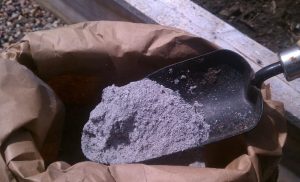 Natural and readily available organic fertilizer that provides plants with potassium, calcium, iron, magnesium, phosphorus and boron. Use it for any kind of soil. Due to its calcium content, ash has a positive effect on the taste of tomato fruits. Used to feed the soil throughout the year. In the spring, they are mixed into the soil when planting, in the summer they make complex feeds, in the fall they are brought in before plowing the ground, and in winter they are used in a greenhouse. Ash also helps fight pests. The most valuable is birch and pine ash, the potassium content of which reaches 12%.
Natural and readily available organic fertilizer that provides plants with potassium, calcium, iron, magnesium, phosphorus and boron. Use it for any kind of soil. Due to its calcium content, ash has a positive effect on the taste of tomato fruits. Used to feed the soil throughout the year. In the spring, they are mixed into the soil when planting, in the summer they make complex feeds, in the fall they are brought in before plowing the ground, and in winter they are used in a greenhouse. Ash also helps fight pests. The most valuable is birch and pine ash, the potassium content of which reaches 12%.
Store in a dry place, in a sealed package, because it absorbs moisture from the air and quickly loses its beneficial properties.
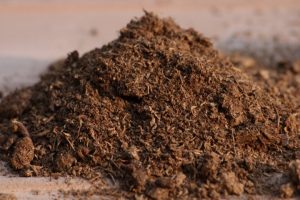 Manure is an organic fertilizer, 10 kg of which in the semi-decomposed form contains nitrogen (50 g), phosphorus (25 g) and potassium (60 g). Bring it in when digging the soil with the calculation of 6 kg / 1 m2 and a regularity of 1 time / 2 years.
Manure is an organic fertilizer, 10 kg of which in the semi-decomposed form contains nitrogen (50 g), phosphorus (25 g) and potassium (60 g). Bring it in when digging the soil with the calculation of 6 kg / 1 m2 and a regularity of 1 time / 2 years.
Do not use fresh manure, because it contains nutrients in a form that is not available for "digestion" by plants. To get half-decayed manure - you need to keep fresh under a layer of peat 20 cm high for 7-8 months.
Banana peel
Peel of bananas can provide plants with potassium, magnesium, calcium and phosphorus. Bring it into the wells during the landing of plants, or added to the compost. The spoiled fruit is ground, mixed with water and aged. Then sprinkle and water the tomatoes. Use for any kind of soil.
Mineral Potassium Fertilizers
Mineral fertilizers are composed of one or more components that are necessary for plant development.
Potash
The second name is “Potash”. The composition of the fertilizer includes about 55% potassium, there is also magnesium and sulfur. Used for acidic soil, it makes it more friable and fluffy.
The rate of fertilizer is 20 g / 1 m2 for normal feeding. When the soil is saturated in the autumn period - 50 g / 1 m2, in the spring - 90 g / 1 m2. For late dressings we use 18 g / 1 m2.
Kalimagnezia
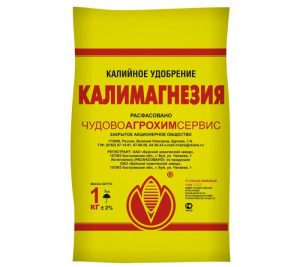 It is a combination of potassium and magnesium. Used for all types of soil. However, on sandy soils, the components are quickly washed out, therefore, fertilizing is carried out more often.
It is a combination of potassium and magnesium. Used for all types of soil. However, on sandy soils, the components are quickly washed out, therefore, fertilizing is carried out more often.
Kalimagneziya has several advantages:
- it contains no chlorine;
- can be used in dry and dissolved form, as well as for spraying;
- the components are in plant-readable form.
For root feeding, 10 g / 1 m2 is calculated. The first feeding is carried out during the transplantation of plants in open ground. The second - during the beginning of flowering. The third is before the fruits are tied up. If the plants show signs of potassium deficiency, additional foliar feeding is carried out.
Potassium monophosphate
It belongs to mineral fertilizers and in addition to potassium incorporates a phosphoric element.
The advantages of this fertilizer:
- can be used for root and foliar dressings;
- quickly disintegrates, therefore overdose is not terrible for tomatoes;
- does not affect the acid-base balance of the soil.
However, the fertilizer has minor drawbacks:
- plants do not assimilate it dry;
- provokes intensive weed growth;
- when wet it loses its beneficial properties;
- the solution reacts negatively to exposure to sunlight, so it is used immediately after dilution.
For spraying use 10 g of fertilizer, which is dissolved in a bucket of water. For root dressings, dilute the solution (15 g / 10 l) and fertilize the plants in two stages:
- during the formation of the fruit;
- 1-2 weeks after the first feeding.
Potassium nitrate
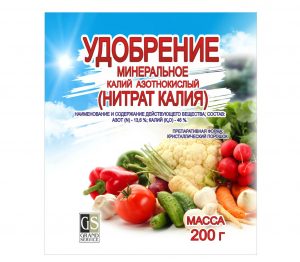 Another name for fertilizer is potassium nitrate. Like previous fertilizers, great for tomatoes, because the composition does not contain chlorine.The potassium nitrate complex includes potassium and nitrogen, it is used during the period of fruit formation. It has several advantages:
Another name for fertilizer is potassium nitrate. Like previous fertilizers, great for tomatoes, because the composition does not contain chlorine.The potassium nitrate complex includes potassium and nitrogen, it is used during the period of fruit formation. It has several advantages:
- increases the ability to resist diseases of fungal and bacterial origin;
- can be used in any form - dry, diluted and for spraying.
The components of potassium nitrate accumulate in the fruit with non-compliance with dosages. Therefore, use it according to the instructions.
The following proportions are used for tomatoes:
- watering - 20 g / bucket of water;
- spraying - 25 g / bucket of water;
- dry application - 30 g / 1 m2.
Stop fertilizing tomatoes need four days before cutting off the fruit. Immediately before the collection itself, pour water on the bushes abundantly.
Nitroammofosk
The composition of the fertilizer consists of three main components for the full development of the plant: nitrogen, potassium and phosphorus. Due to this, tomatoes become more resistant to such diseases as phytophtora, scab, stem and root rot. Used for all types of soil.
Lack of fertilizer:
- small storage period (6 months);
- fruits accumulate nitrates as a result of its use;
- flammable, explosive. Wear gloves and a respirator when used.
While digging up the soil, 40 g / 1 m2 is introduced, the uncultured land is dug up with the addition of 50 g / 1 m2.
Potassium sulfate
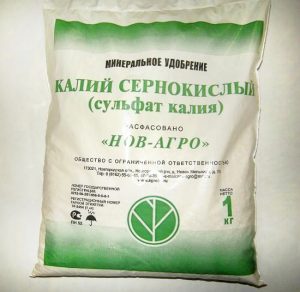 The second name is potassium sulphate. The potassium content in this fertilizer of natural origin reaches 50%. Well "works" in acidic, sandy soils, black soil, peat soil. The advantages of this fertilizer:
The second name is potassium sulphate. The potassium content in this fertilizer of natural origin reaches 50%. Well "works" in acidic, sandy soils, black soil, peat soil. The advantages of this fertilizer:
- can be used in dry and liquid form;
- positive effect on soil composition.
Potassium is applied at a rate of 20 g / 1 m2. To feed the tomatoes also add nitrogen and phosphorus.
A significant lack of fertilizer is a danger to the human body if the concentration of the substance is exceeded. In addition, when interacting with the solution, be sure to use gloves and protect the eyes.
Recommendations for the use of potash fertilizers
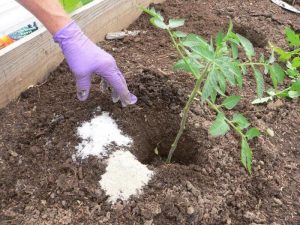 They are fed in an integrated manner, since potassium "does not work" independently, the soil must still be enriched with nitrogen and phosphorus.
They are fed in an integrated manner, since potassium "does not work" independently, the soil must still be enriched with nitrogen and phosphorus.
The first stage is nitrogen fertilization. Carry it out in the spring, before planting seedlings. Thanks to nitrogen, plants will be able to gain the necessary green mass.
The second stage - the end of flowering. Feed the plants with potassium. Carefully observe the plants so that they do not drop flowers or ovaries. If the bushes show signs of lack of potassium - conduct additional spraying.
The third stage is harvesting. In the autumn they dig up the earth with potassium and phosphorus. During the winter period, the components will dissolve and absorb the soil, and in the spring the plants will be able to absorb nutrients.
Gardeners mistakes
- When choosing potash fertilizers, many novice gardeners make a serious mistake - they forget that tomatoes are a vegetable crop that tolerates chlorine very poorly. Many supplements containing potassium, are also composed of chlorine, for example, potassium chloride and potassium salt. These fertilizers can not be used for dressing tomatoes. However, in order to enrich the land with potassium, we introduce potassium chloride in the ground for the winter. During this time, the components of the choir will evaporate, and in the spring we will get a soil saturated with potassium.
- A lot does not mean good. Excess potassium can harm plants as well as its deficiency. Therefore, use fertilizers according to the instructions and dosage.
- Do not use all types of fertilizers at once, the plants need time to absorb and "digest" components. To ensure that tomatoes are well absorbed by the elements of potassium, they do not apply fertilizers to the nitrogen group, including manure, before carrying out potassium fertilization.
Potassium plays an important role in plant life. It helps them to develop properly, makes them stronger and more durable, increases the volume and quality of the crop.In time and correctly using potash supplements, you can please yourself and loved ones with tasty and ripe tomatoes.


